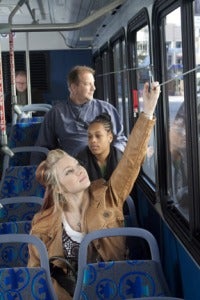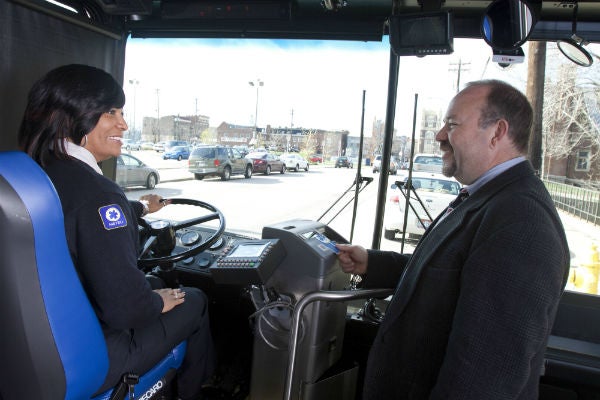Safety & Security
Safety is #1 at Metro… ride safe!
Whether you’re on the bus or in any public place, here are a few precautions to yourself keep safe:
- Be aware of your surroundings
- Keep valuables out of sight
- If you see something, say something – alert the bus operator if you see anything suspicious
Follow these tips to make sure your trip is as safe as possible:
Use a designated bus stop.
Bus stop locations have been chosen for maximum safety. Operators are not permitted to pick up or drop off passengers outside marked stops.
Never run for a bus.
Running for a bus can lead to slips, falls and other accidents. If the operator is already pulling away, please don’t chase the bus or pound on the door. It’s much safer to wait for the next bus.
Have your fare ready.
Having your fare ready helps cut down on delays and keeps the bus and your fellow riders on time.
Wait your turn.
Let passengers exit the bus before boarding to minimize crowding. Allow passengers using wheelchairs to board and exit first.
Hold on.
Use handrails to steady yourself on the way to your seat.
Pick your seat.
Choose your seat quickly and sit down, then avoid changing seats while the bus is in motion.

Watch children.
If traveling with children, make sure they stay seated for their safety.
Stand behind the yellow line.
Stay seated whenever possible. If the bus is full and you must stand, remain behind the yellow line. It’s the law! Operators can’t see the mirrors when passengers stand forward of the line. If you must stand, hold onto the handrails at all times.
Keep aisles clear.
Keep all personal belongings such as shopping bags or laptop cases out of the aisles. Strollers and grocery carts must be folded.
Be careful during bad weather.
Rain and snow call for extra caution. Wet floors can be slippery, so be sure to use the handrails.
A note about talking
Please do not engage the operator in conversation while they are driving. If you must ask a question, do so when the bus is stopped. Talking is a distraction, and your operator needs to focus on the road. Also, please be courteous to other passengers when using a cell phone and be sure to avoid profanity.

Keep your seat until the bus stops!
Request your stop by ringing the bell about one stop before your own. Remain seated until the bus has come to a complete stop.
Hold on.
Again, always use handrails when walking on a bus.
Watch your steps.
Use caution when going down steps and when stepping off the bus.
Don’t cross in front of the bus.
Wait until the bus pulls away before starting to cross the street. Cross only at crosswalks and obey traffic signals.
If you have any questions about riding the bus safely, call 513-621-4455.

Metro Safety Awards
Each year, more than one hundred Metro operators and mechanics earn safety awards for providing accident-free service. Metro works with its drivers and mechanics throughout the year to ensure the highest level of safety for our passengers. Metro operators undergo regular training to improve safety performance, and reinforce driving competencies.
